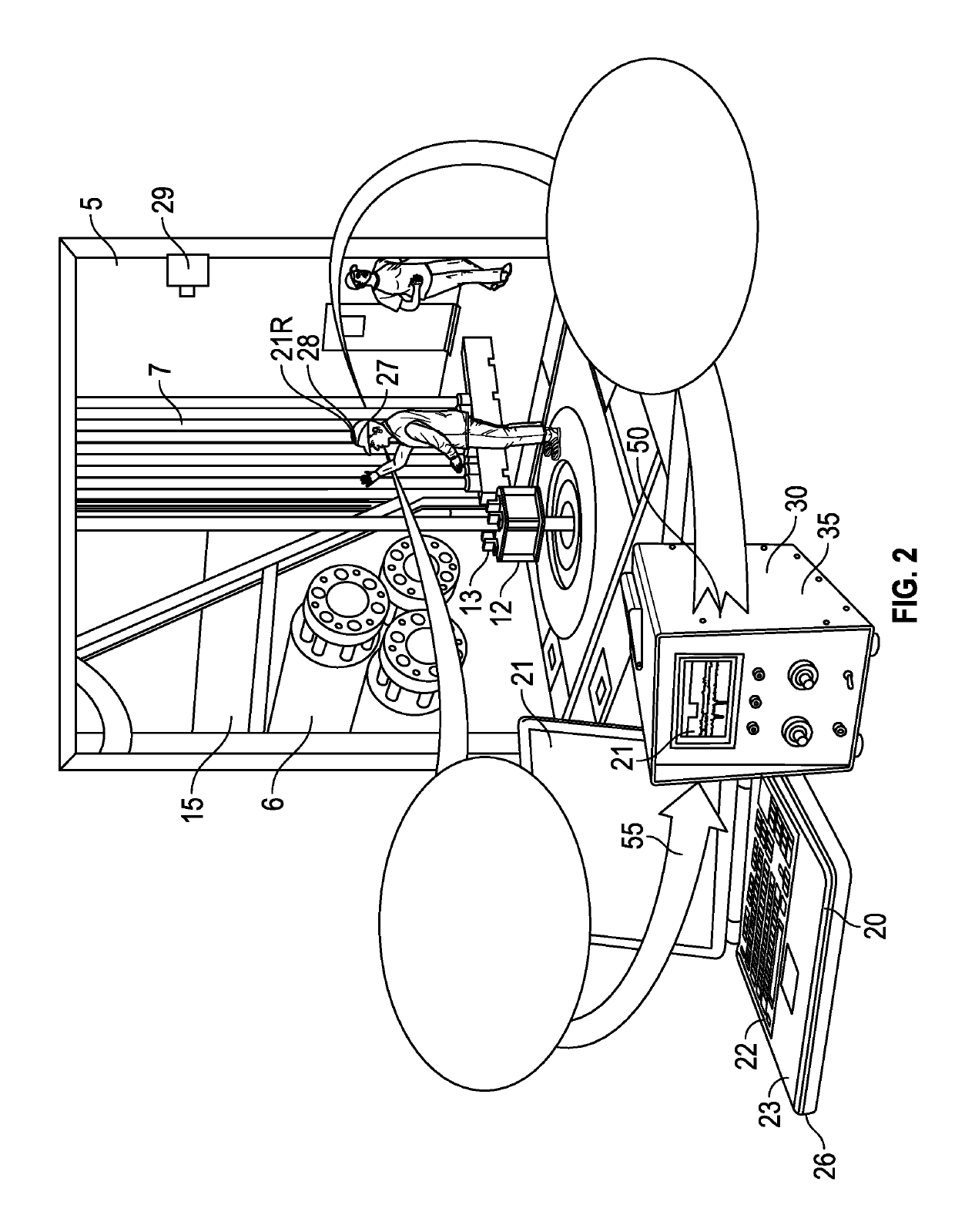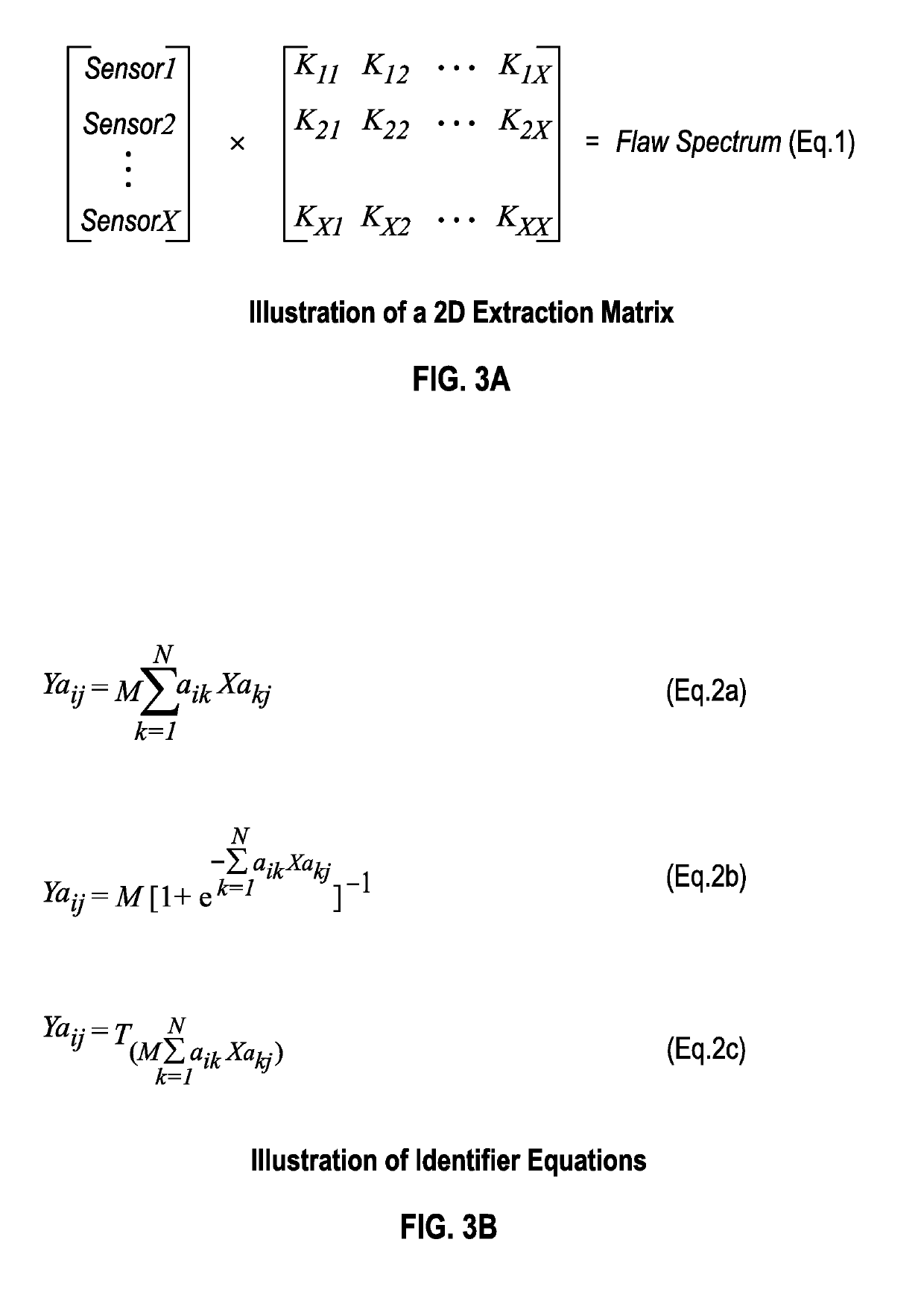During its useful life, MUA deteriorates and / or is weakened and / or is deformed by external events such as mechanical and / or
chemical actions arising from the type of application, environment, repeated usage, handling, hurricanes, earthquakes, ocean currents, pressure,
waves, storage, temperature, transportation, and the like; thus, raising safety, operational, functionality, and serviceability issues.
A failure occurs when the stresses due to the deployment Loads exceed the actual Riser strength.
Some combine different 1D-NDI techniques in-line resulting in a system with two or more 1D inspection signals that are not related in form, kind, space and time and thus, they cannot be used to solve a system of equations.
It should be expected that the Lack-of-Knowledge about the MUA Features results in “false indications” or “false calls” whereby the 1D-NDI
signal (1D-NDI flag) is not associated with any Feature, resulting in wasted
verification crew man-hours and reduced productivity.
US
Patent Application 2004 / 0225474 describes the same problem in “A significant impediment to NDE inspections in the field (as opposed to depot) and to onboard diagnostics and
prognostics is the potential for excessive false indications that directly
impact readiness”.
In other words, 1D-NDI cannot be deployed in the field or onboard an aircraft because of the excessive number of 1D-NDI “false indications” requiring the human intervention of at least one
verification crew.
However, the “
noise” also contains
metallurgy and Fatigue signals in addition to the sensor ride chatter.
Therefore, modern day
repackaging of the 1920s 1D-NDI means and methods did not improve the overall 1D-NDI performance.
Because of the
signal comingling and the limited
dynamic range, 1D-NDI cannot detect many of the dangerous imperfections early on, such as fatigue, and has a limited operational range for
pipe size, configuration, wall thickness, types of imperfections, inspection speed, sampling rate and similar items while it still relies on the manual intervention of a
verification-
crew to locate and identify the source of the 1D-NDI
signal.
Inspection, such as 1D-NDI, inherently cannot fulfill that role.
Although API RP-579 lists some of the MUA specific data required to facilitate an Assessment it fails to provide means to obtaining the MUA specific data that lead to an Assessment as it only focuses on how difficult it is obtain such data (sufficient number of good
quality data) with 1D-NDI.
Attaining detailed MUA condition knowledge and the associated specific data through manual means is prohibitive both financially and time wise as it involves the employment of a number of multidiscipline experts, laboratories and equipment.
However, this Riser-OEM Spot-Checks is inadequate and inappropriate for the inspection of used Riser where 100% inspection coverage is essential for the calculation of the maximum (peak) Riser stresses.
It should also be noted that Riser-OEM Spot-Checks is inadequate and inappropriate for the inspection of all other new or used Oil-Country-Tubular-Goods, hereinafter after referred to as “OCTG”, like
drill pipe.
Again, this Riser-OEM Spot-Checks may be adequate to verify the compliance of new
pipe with the
purchase order; however, it is inadequate for the inspection of used Risers as it leaves over 99% of the Riser condition unknown, a serious safety
hazard.
Although the Riser is exposed to a
high probability of transportation and handling damage including but not limited to disassembly and reassembly errors and omissions, this entire process does not produce sufficient data to verify the used Riser integrity or for the calculation of the maximum (peak) Riser stresses.
A careful study may conclude that this process is more harmful than helpful because, among many more, it also a) produces a significant amount of air and water contaminant from the transportation, sand-blasting and pressure-washing of the Riser pipes and b) gives the false sense of security to the rig crew that otherwise may be more vigilant during the deployment or retrieval of the Riser.
Again, Riser-OEM spot-checks do not meet the new or used
drill pipe and other OCTG minimum inspection requirements.
The irony of it all is that if the
drill pipe breaks it would result in an inconvenience as the Riser will protect the environment and limit any harmful consequences.
If the Riser breaks, drilling and well fluids and gases would be released immediately to the environment with limited means to control the damage and the
pollution.
However, under abnormal, contingency, extreme, emergency and survival conditions the knowledge of the actual strength of the weakest riser joint in the string becomes the key to survival, not an assumed value of an ideal material that is never present in a string.
Furthermore, the greater water depths are now overshadowing the ideal Riser material assumptions.
 Login to View More
Login to View More  Login to View More
Login to View More 


